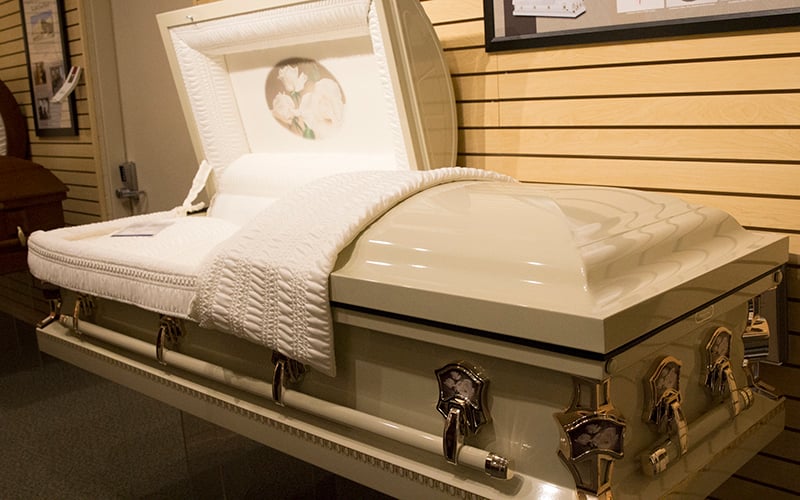
The selection room at Messinger Mortuary has caskets on display as well as photos to help families make final arrangements. (Photo by Moriah Hernandez/Cronkite News)
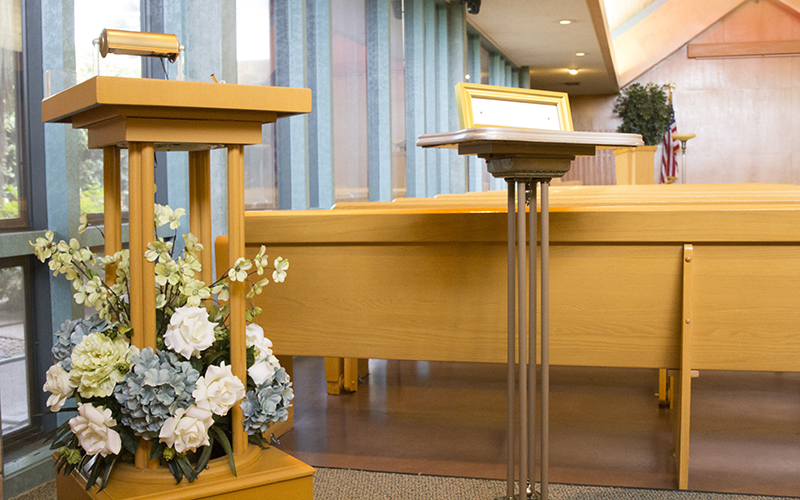
Messinger Mortuary has its own small chapel available for families to hold funeral services. (Photo by Moriah Hernandez/Cronkite News)

Messinger Mortuary offers a variety of designs, size and material for urns. (Photo by Moriah Hernandez/Cronkite News)

Natural containers are available for purchase at Messinger Mortuaries. (Photo by Moriah Hernandez/Cronkite News)

Although families are not required to purchase urns, Messinger has a large display of options. (Photo by Moriah Hernandez/Cronkite News)

Messinger Mortuary has been open since 1959. It now has six different locations, including one in Payson. (Photo by Moriah Hernandez/Cronkite News)
PHOENIX – Several Arizona funeral home directors say a new online system to process death certificates has led to delays in cremations and burials.
One funeral administrator said Messinger Mortuaries used to handle about 30 cremations a day, but that dropped to four per day after the Arizona Department of Health Services launched the system in October.
Heather Everett, an administrative assistant at Messinger Indian School Mortuary, said the process of getting to cremation went from hours to several days under the new system.
The Arizona Board of Funeral Directors and Embalmers briefly discussed funeral homes’ concerns in November. Executive Director Judith Stapley declined to comment about the accusations of an inefficient system.
DHS moved from a paper-based system to an online system to issue birth and death certificates to “enhance” the process, DHS spokeswoman Nicole Capone said in an email. The system is performing well but the agency is reviewing the system after complaints were lodged, she said.
The system has become more tangled because hundreds of doctors who issue death certificates have not been entered into the online system, and several funeral administrators said they didn’t have enough training on the new database.
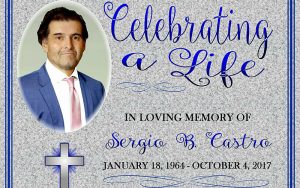
Sergio Castro wasn’t cremated until 15 days after his death in Tucson. (Photo courtesy of Imelda Vidal)
Imelda Vidal’s brother, Sergio Castro, 53, died of heart failure on Oct. 4. She started cremation plans the next day, but the funeral home said she had to wait as long as three weeks because of the new death certificate process. His body wasn’t cremated until more than two weeks later.
“I don’t understand the mentality of going online with a system that’s not ready, that’s going to cause more harm or pain to people that are already in pain because they lost somebody,” Vidal said. “The pain and anguish it causes is horrible.”
Vidal’s brother was not the only one whose final arrangements were delayed, said Jakki Moss, manager of Messinger Indian School Mortuary.
“We weren’t able to help the families, and at the end of the day it doesn’t matter — state, county — it is about the families that are grieving. That is our job, to help them,” Moss said. “The frustration was that we weren’t able to do that, and it was through no fault of our own.”
At least one funeral home manager said agency officials checked in on the situation and the weeks-long problems are finally beginning to settle down.
New system, new problems
Under the previous, paper-based system, funeral directors could start planning cremations or burials without waiting for the completed death certificate. Once they faxed a form and worksheet to the Office of Vital Records they could receive a disposition permit, according to the Maricopa County website.
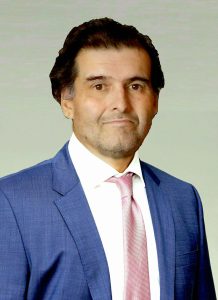
Sergio Castro died of heart failure on Oct. 4 at age 53. (Photo courtesy of Imelda Vidal)
Physicians now are required to complete death certificates online. The new workflow will not allow funeral homes to obtain disposition permits before the registration of the death certificate is complete, according to the Arizona Funeral, Cemetery and Cremation Association.
But two problems emerged, some funeral directors said. Hundreds of doctors are not registered in the new system, meaning they can’t log in to see which deaths need to receive certificates, said Everett, the administrative assistant at a Messinger mortuary. That has meant mortuary administrators have to hunt down doctors.
In one case, Everett sent a certificate to a doctor. Nine days later, there still was no response. Eventually, she had the state department relinquish the certificate for him, so another doctor could sign off on it.
“There should have been a requirement for (physicians) to get into that system before the roll out, because having to hunt them down and get them in the system to certify has been hard,” Moss said.
Reports of cremation and funeral backlogs surfaced soon after the new system went into place.
“Instead of it taking hours to get cremation clearance like typical, it was taking days. So we were getting more and more backed up. We would get a few out to our crematory, but in that time we were taking in three times as many as we were getting out,” Everett said.
When Vidal visited Avenidas Cremation & Burial to make her brother’s final arrangements the day after his death, the funeral director told her there would be a delay. His body would not be embalmed during that waiting period, but stored in a refrigerator until the funeral home received clearance.
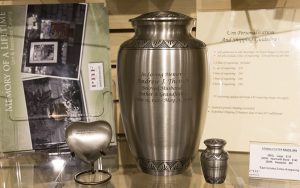
Families can have urns personalized as desired. (Photo by Moriah Hernandez/Cronkite News)
“It gave me nightmares. What is he going to look like in three weeks?” Vidal said.
The funeral director told her about the new online system, known as Database Application for Vital Events or D.A.V.E., and its complications, explaining many of the doctors weren’t yet entered in the system to certify the death certificates.
By mid-November, Messinger Mortuary was still experiencing issues with doctors not being entered into the system. Everett estimates only about half of the Valley’s 6,000 physicians are registered.
Sharla Hooper, associate vice president of communications at the Arizona Medical Association, said in late November that physicians’ complaints about the new system have decreased.
Krystal Colburn, DHS bureau chief, said at the November funeral directors and embalmers board meeting there’s no way to know how many doctors are not yet in the system, but the agency is working on it. And a county official urged funeral directors and physicians “to please be patient” as they work through the process.
Training efforts
The state health agency released a preliminary implementation plan, which included prelaunch training for medical certifiers, funeral directors and others who would use the system, a month prior to the scheduled rollout.
Messinger Mortuaries and other funeral home representatives attended a meeting about the new system on March 29. Everett said she attended every meeting, conference call, discussion and training on the new system.
“I feel like from the beginning all funeral homes’ concern was that we just weren’t trained enough. We didn’t understand enough,” Everett said. “We never were given the opportunity until Sept. 11 to actually see the program, actually sit at a computer and use it.”
Only three computers were available for at least 100 trainees at the September meeting, Everett said. “It was not accessible for us to get our hands on it. We were literally depending on PowerPoint presentations.”
She said she repeatedly asked the state for more extensive training.
“I don’t think the state took seriously all the concerns that were given to them. At every meeting I was involved in, concerns were brought up by a funeral home,” Everett said. “They were all dismissed with ‘there’s a plan for that and that plan is forthcoming.'”
The Arizona Medical Association has been working with DHS on the educational and training material to help overcome the startup issues, Hooper said, adding DHS is handling issues and concerns constructively.

Messinger Indian School Mortuary. (Photo by Moriah Hernandez/Cronkite News)
Capone said there were numerous and comprehensive trainings provided for all system users, including regular communication to users, web-based seminars, training videos, conference meetings and the training website.
Since the October roll out, DHS has been reviewing the system, Capone wrote in an emailed DHS statement.
“D.A.V.E. has proven to be more effective than the old paper-based system when it comes to how long it takes to process death registrations,” Capone said. “Those registrations take five fewer days now, using D.A.V.E, compared to one year ago under the prior system.”
Everett said that has not been her experience.
“This was intended to make it easier. It certainly hasn’t made anything faster as far as receiving certified death certificates,” Everett said. “Even when it happens fast, I wouldn’t say we’re getting certified copies faster than what we have in the past.”
Capone said the agency is “actively monitoring the system and comparing its performance with the old system.”
When comparing the number of death registrations in 2016 to those using the new system during the same time period, about more registrations were completed in 2017 using D.A.V.E., Capone said.
“Of significant importance is that the registrations occurred, on average, three days faster,” Capone said.
She disagreed with funeral managers who said their facilities would exceed capacity because of backlogs.
“There is no data to suggest that there was ever a danger of statewide capacity being exceeded. That scenario simply did not materialize,” Capone said in the email.
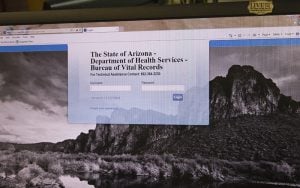
Arizona Department of Health Services went live with its new vital records system on Oct. 2. (Photo by Moriah Hernandez/Cronkite News)
Glimpse into the future
For all the problems of the new system, Everett said, she can see glimmers that it will eventually work.
“Now, the middle of November, we’re starting to see that it’s eventually going to work,” Everett said. “It’s going to be a good system. But unfortunately, it’s taken until this point for us to even see that glimpse.”
Still, Messinger Mortuaries is being careful, said Sabrina Messinger, assistant CEO of the mortuary company.
They keep a paper log of every case to ensure one doesn’t slip through the cracks, Messinger said.
Cronkite News Photo/Video Producer Ashley Ballard contributed to this report.